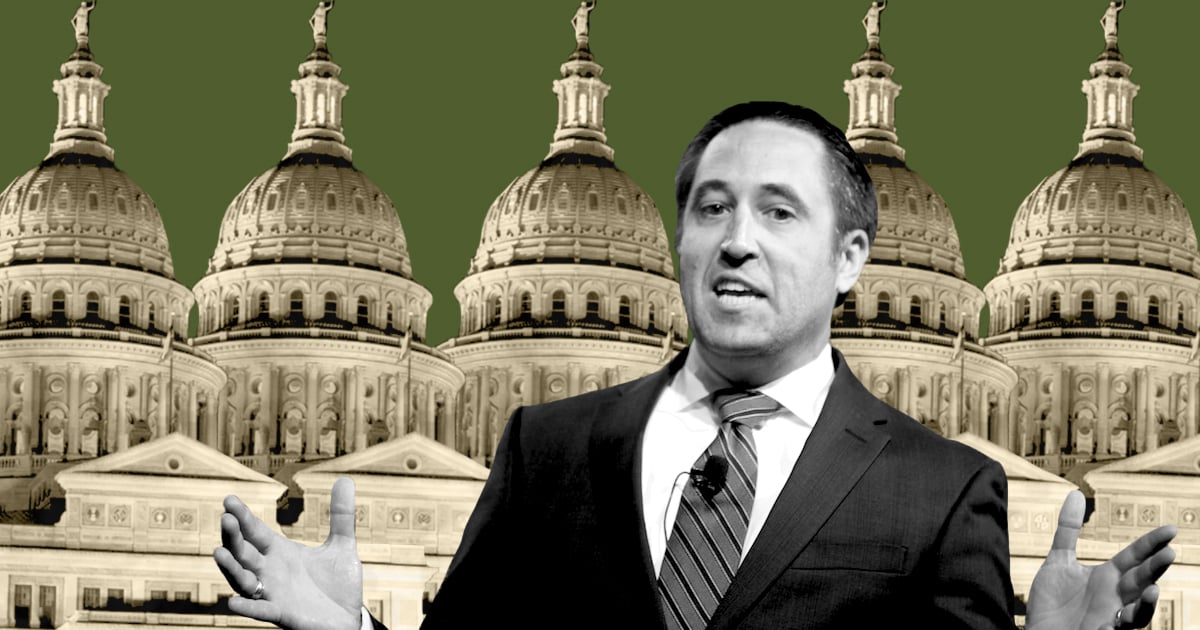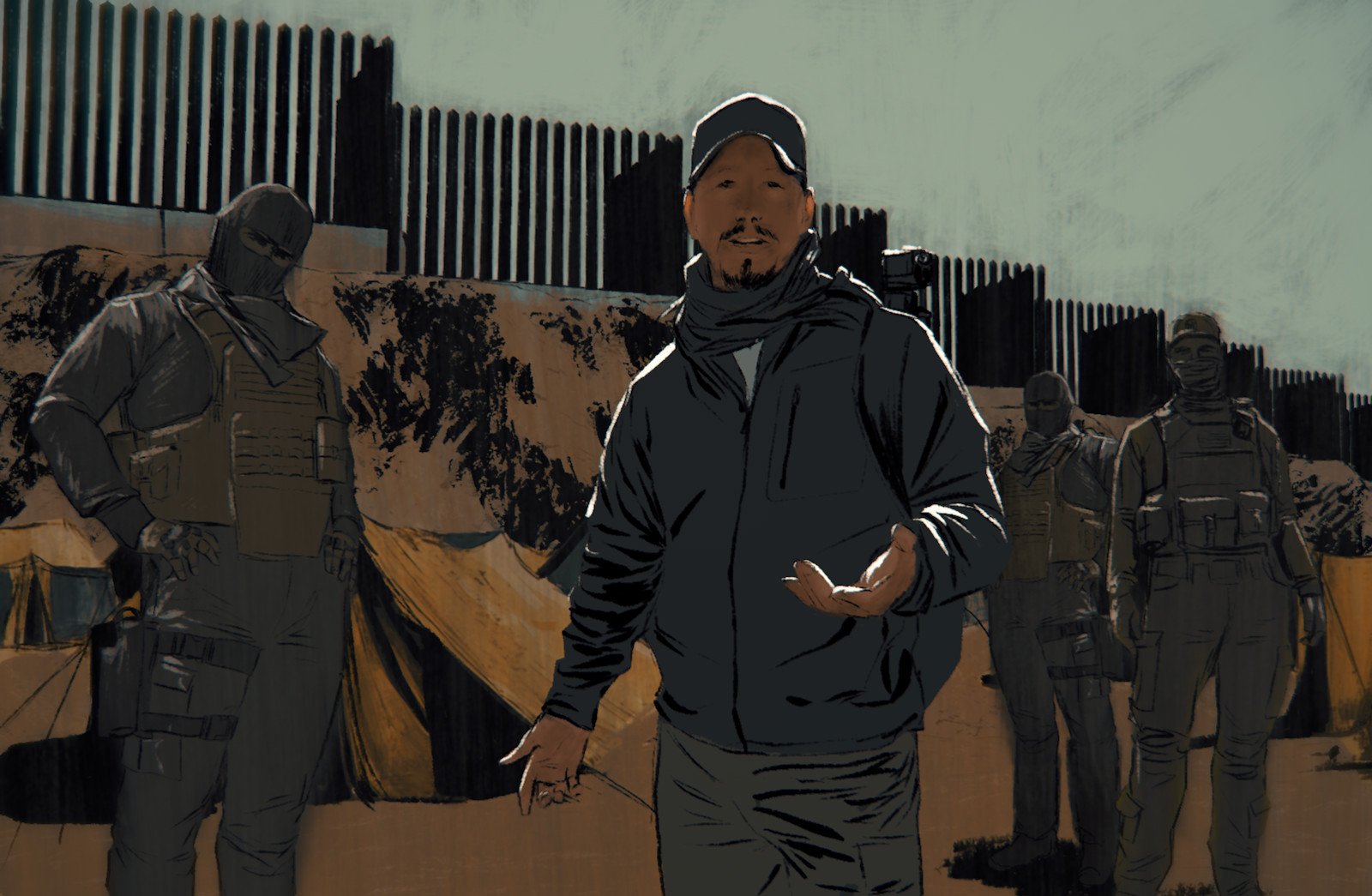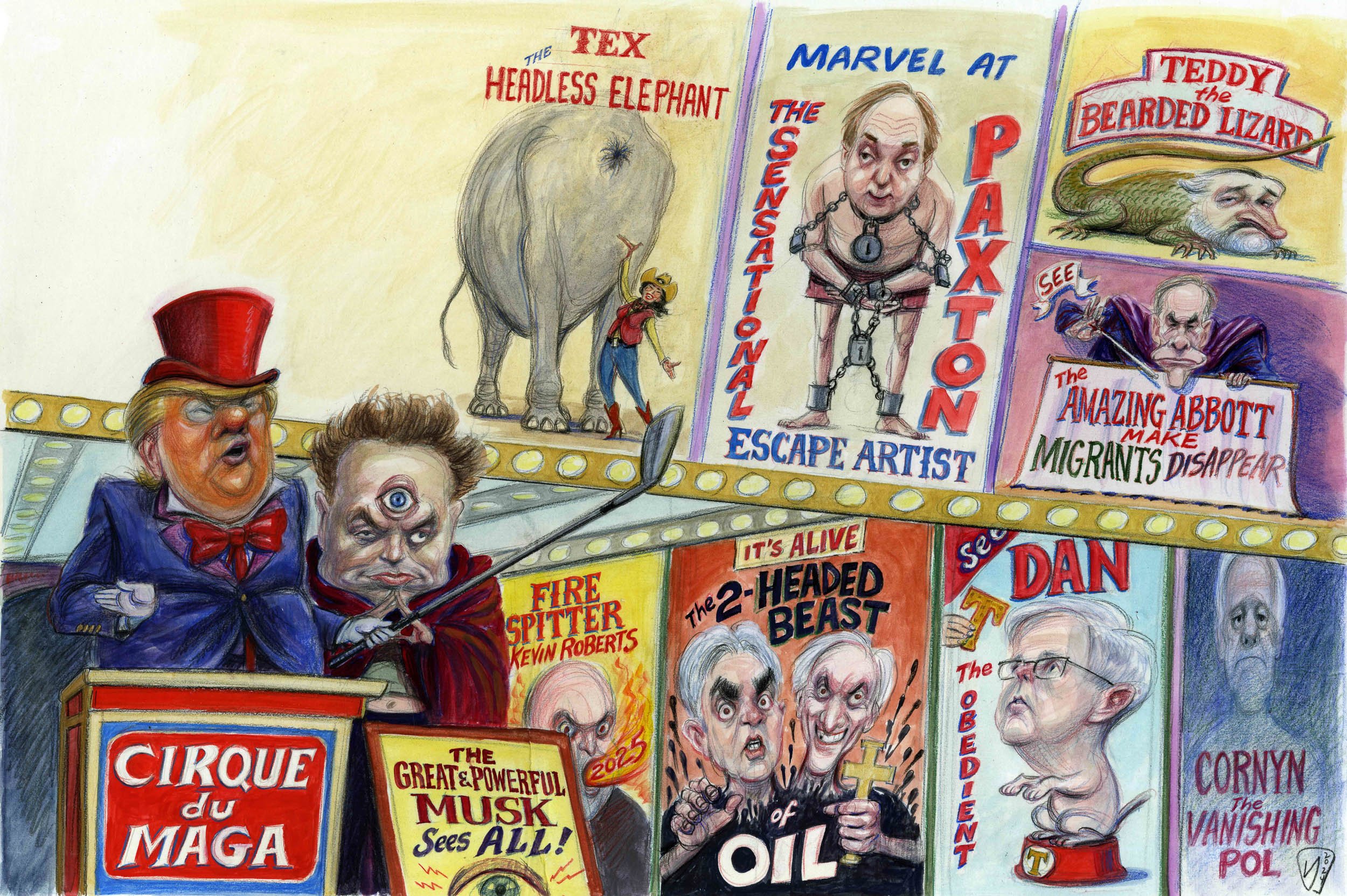Book Review
Acquiring Texas
Stephen F. Austin: Empresario of Texas
The historical record clearly suggests that among those gathered inside the walls of the Alamo on that fateful March morning in 1836, doctors and lawyers outnumbered farmers. But it has never been politic for a Texas writer to characterize these freedom fighters as a collection of rifle-toting entrepreneurs, whose eagerness to get in on the biggest land grab in American history foreshortened their military planning skills to the point of extinction. And even if one accepts the notion that the Texas Revolution was largely the work of armed real estate developers, Stephen F. Austin continues to occupy an ambiguous position in the Revolution’s pantheon of heroes.
Unversed in the manly arts of trailblazing, Indian fighting, and Mexican shooting, Austin actually performed most of his heavy lifting on behalf of the Lone Star while hobnobbing with legislators at the elegant Washington Hotel in downtown Mexico City. And he never really looked the part. Unlike Austin’s portrayal in the Elizabeth Ney sculpture now in the Capitol Rotunda –fully armed and outfitted in buckskin activewear – contemporary portraits depict a delicately featured man dressed in expensive business suits, carefully sizing up the observer. Austin may not have been much of a frontiersman, but he was, by all accounts, one hell of a lobbyist.
For more than seventy years the only generally available biography of Austin has been Eugene Barker’s 1926 Life of Stephen F. Austin. Subtitled A Chapter in the Westward Movement of the Anglo-American People, Barker’s Life depicts Austin as a self-sacrificing agent of Manifest Destiny, committed to the simultaneous advancement of civilization, rising property values, and the territorial imperatives of white people. Fortunately, Gregg Cantrell’s Stephen F. Austin: Empresario of Texas provides a long overdue update to the Austin legend. Cantrell, a professor of history at Abilene’s Hardin-Simmons University, takes his readers on an enthusiastic plunge through Texas history, and serves up an engaging tale that combines frontier adventure, political intrigue, and personal financial planning of the highest order.
The son of a Connecticut businessman who made and lost a fortune in a slave-operated Missouri lead mine, Stephen F. came to Texas in 1821 to take charge of a colonization scheme that his father had arranged with Spanish authorities shortly before his death. Heavily in debt thanks to series of unsuccessful land speculations in Arkansas, Austin was initially skeptical of his father’s plans to settle three hundred Anglo-American families in Mexican territory. But a closer look at the numbers convinced Austin that the Texas deal had legs.
For starters, the proposed colony encompassed roughly 7 million acres, including some of the most productive agricultural lands in Texas. Although the Mexican government was offering the land for free to settlers, Austin intended to charge a per-acre fee of twelve-and-a-half cents to survey the land and secure the title. For cash-strapped families who could not afford the fee, Austin would waive in charge – in return for half the settler’s allotment. In addition to these management fees, the empresario was allowed to pick out more than 88,000 acres of prime lands for himself, and to award large grants of land to settlers who rendered special services to the colony. These grantees invariably turned out to be either members of Austin’s own family, or his close business associates, such as his personal secretary, Samuel May Williams. Another 44,000 acres were set aside for Jared Groce, a wealthy slave owner whose daughter may have briefly appeared on Austin’s list of matrimonial prospects.
Of course the owners of these vast grants could not hope to actually cultivate more than a fraction of their holdings – the chance for a real killing came through the operations of the wildly speculative market for Texas lands back East. There, throngs of city dwellers were eagerly outbidding each other for the opportunity to own the Jacksonian era’s equivalent to dot.com stocks, often unaware that they were snatching up properties in areas where the most effective military force belonged to the Comanches.
All of this largesse depended on smooth relations with the Mexican government, and Austin spared no expense in keeping the pump primed. No sooner had he staked out the proposed boundaries of his colony than he headed for Mexico City to grease the legislative machinery. Austin quickly acquired a wide range of contacts both inside and outside the government, often cementing his relationships with leading players by offering them shares in his various business ventures. Even General Manual de Mier y Terán, an implacable foe to Anglo-American immigration to Texas, was invited to join the club. “I wish the boss (Terán) to take a part in this,” Austin wrote a friend concerning one particularly shaky land deal. “If he will, all is safe.”
Back in Texas, Austin worked closely with the local Tejano elite based in San Antonio, as well as wealthy expatriates from the States, including the former slave trader Jim Bowie, who had married into a prominent Hispanic San Antonio family. As proof of his loyalty to his adopted country, Austin accepted a commission as lieutenant colonel in the Mexican militia, and participated in the suppression of the Fredonian rebellion that broke out among Anglo-American settlers in the Nacogdoches area in 1827. “I do say that the North Americans are the most obstinate and difficult people to manage that live on the earth,” Austin wrote in 1830, sounding for all the world like a beleaguered Mexican bureaucrat.
Unencumbered by Eugene Barker’s view of Austin as representative of a conquering race, Cantrell emphasizes the speed with which the novice empresario assimilated himself into Mexican society. Austin had acquired a working fluency in Spanish within weeks of his arrival in Mexico City, and wasted no time in applying for citizenship and converting to Roman Catholicism. Despite the occasional grumbling of his fellow colonists, Austin remained loyal to the Mexican government as long as it allowed his business ventures to continue more or less undisturbed. Cantrell continually reminds us that Austin, “well-educated, articulate, clever, and possessed of polished manners,” came to Texas to make money, not rebellion. Cantrell sees Austin as defying the popular image of the “rugged, self-reliant, innocent, democratically inclined frontier leader. He was neither Davy Crockett nor John Wayne.”
With or without the coonskin cap, Austin’s methods got results. Four subsequent empresario contracts doubled the size of Austin’s original colony, and Austin’s personal accounts benefited from his insider status as well. After the passage of a law that allowed well-connected Mexican officials to claim huge amounts of Texas lands and resell them to foreigners, Austin snatched up grants totaling 146,000 more acres, for a mere $1,000 cash. This transaction was actually fairly modest, when compared to the 780,000 acres Jim Bowie added to his personal portfolio as a result of the same law.
Austin’s talents at legislative legerdemain also came in handy in dealing with the nettlesome question of slavery. The 1824 Mexican Constitution had explicitly outlawed slavery in the Republic, but the ban was openly flouted in Texas, where land was cheap but labor expensive. Moreover, most of the colonists came from slave-owning areas in the States, and much of their personal wealth was tied up in slaves. Cantrell notes that Austin, like many other political liberals of his time, privately worried about the corrosive effects of the Peculiar Institution upon democratic institutions, and on several occasions even suggested that his colonists experiment with other systems of forced labor that did not rely on the concept of chattel slavery. But any personal ambivalence on the issue did not prevent him from repeatedly derailing any attempts by Mexican officials to abolish or even curtail slavery in Texas. “Texas must be a slave country,” Austin wrote in 1833, a truth that must have seemed self-evident to anyone who could read a bottom line.
Austin also repeatedly haggled with Mexican authorities about paying the expenses of military campaigns against the indigenous tribes in the area. Austin occasionally found it cost-effective to negotiate with rather than fight the highly mobile Plains tribes further west, a tactic that resulted in his later reputation as a moderate when it came to dealing with Native Americans. But no such latitude was visible in his policy towards the Karankawan people, who originally populated the area along the Gulf Coast now occupied by his colonies. Calling them “the universal enemies of man,” Austin instructed his militia to kill any Karankawan on sight, stating “there will be no way of subduing them but extermination.”
In fact, the chief threat to Austin’s enterprises came less from Mexican authorities or raiding Comanches than from his own colonists, who resented his high management fees and generous land grants to members of his inner circle. In 1825, Austin arrested one particularly vocal critic on charges of sedition, but the unrest continued. Much of it was orchestrated by rival empresarios, including a group of prominent Nashville businessmen who had conducted a bitter struggle with Austin over the control of a grant encompassing the upper Brazos Valley. Among the malcontents were William and John Wharton, who arrived in Texas from Nashville in 1827 and soon established an anti-Austin newspaper in Brazoria. From the pages of their newspaper the Whartons flailed away at the empresario, calling him a “presumptious dictator” and threatening him with the prospect of “a Brutus with an arm uplifted,” a remark that illustrates once again the unpredictable effects that a classical education can have on the Texas imagination.
In 1832 another member of the Nashville syndicate turned up on Austin’s doorstep: Sam Houston. The former Governor of Tennessee, Houston had come to Texas as an agent for a group of Wall Street investors interested in speculating in Texas lands. His hard-drinking, back-slapping style of politics soon thrust him into the forefront of the anti-Austin movement.
In 1833, Austin was forced to return to Mexico City to lobby against new restrictions on colonization in Texas. While there Austin made the uncharacteristic mistake of writing candidly about the prospects of Texas independence in a letter that eventually fell into the wrong hands. As a result of this indiscretion, Austin found himself in a Mexican prison cell, an event that spawned surprisingly little public protest back home. “We generally hope you detain S.F. Austin for five years,” one settler wrote the Mexican authorities, “because really he is very noxious to Texas.”
For his part, Austin maintained a low profile, continued his contacts with high-level Mexican officials, and politely declined an offer by an American businessmen to help him escape and flee to the United States. After serving almost a year in prison, Austin persuaded authorities to allow him to return to his old digs at the Washington Hotel, where he waited out the final resolution of his case while attending operas, masquerades, and an elegant ball sponsored by the British ambassador.
By the time Austin extricated himself from his legal difficulties and returned to Texas he discovered a political landscape in upheaval. The flood of immigration from the United States meant that Anglos now outnumbered Tejanos ten to one. A pro-independence party supported by Houston was ascendant among these newly-arrived immigrants, and the growing anti-Mexican sentiment was driving a wedge between Austin and his former Tejano allies.
Austin’s position upon his return to Texas was further complicated by political scandal. In 1835, a rump session of the Coahuilan state legislature meeting in Monclova had handed out millions of acres in Mexico’s public lands to North American investors, in a orgy of legislative corruption that included tampering with the wording of the bill after its final passage. Federalist troops from Saltillo finally moved in to break up the assembly, the beginning of a chain of events that would lead to Santa Anna’s invasion the following year. As the speculators beat a hasty retreat to Texas with the Mexican army in hot pursuit, many prominent land sharks became instant and fervent converts to the cause of Texas independence. Among them was Samuel May Williams, Austin’s closest business associate, who had fled Monclova after pocketing land grants totaling more than two million acres.
Austin’s role in the events at Monclova remain a source of controversy to this day, and Cantrell takes issue with Williams biographer Margaret Swett Henson, who notes that Austin continued his business relations with Williams long after the event had become public knowledge. In any case, the taint of the Monclova speculations followed Austin for the rest of his public life and remained a blot on his reputation.
Out of political options, Austin reluctantly signed up with the war party. But his pro-Mexican past continued to haunt him, and a brief but disastrous stint as head of the Texas army ended with his field commanders refusing to obey his orders. Austin spent the remainder of the war on the sidelines, giving fundraising speeches to groups of southern slave owners in the States and describing the hostilities as “… a war of barbarism and of despotic principles, waged by the mongrel Spanish-Indian and Negro race, against civilization and the Anglo-American race.” This from a man who had built his fortune by cultivating any Hispanic politician who could do him a favor.
Following the highly improbable victory of the Houston-led Texan army over Santa Anna at San Jacinto, Austin returned to Texas and endured an humiliating 5,119 to 587 defeat at the hands of Houston, when both men decided to run for president of the new republic. A player to the end, Austin accepted Houston’s conciliatory offer to serve as Texas’ first Secretary of State, but his private letters during this period reveal a bitter and despondent man. He died on December 27, 1836 at the age of forty-three, leaving his heirs an estate valued at more than a half million dollars. He was one of the richest men in Texas.
In retrospect it seems clear that much of Austin’s ambiguous reputation can be traced to his own private nature and his penchant for backroom deals, characteristics that made him vulnerable to charges of elitism both in his day and ours. Early in his biography Cantrell characterizes Austin as “an ambitious, almost obsessively driven man who constantly fought an internal battle between his own personal interests and his feelings of obligation toward others.” According to Cantrell:
[Austin] longed for peace and order in his private life, but his public affairs forced him to endure constant conflict and disorder. It is little wonder, then, that although he took pride in his accomplishments, he was rarely happy and frequently depressed. His reserve and dignity often barely concealed an unflattering tendency to indulge in self-pity.
Despite these tendencies, however, Cantrell argues that Austin’s single-minded devotion to the colonization of Texas and his paternalistic attachment to the settlers (“one great family who are under my care,” as he once phrased it) make him eligible for both “our sympathy and at times, our admiration.”
But many readers of Cantrell’s book will come away with another view of Austin: a man whose achievements rested largely on his genius at intertwining public and private interests, his mastery of legislative chicanery, and his willingness to jettison political principles that no longer served his purposes. It is a complex and often unflattering portrait, and serves to remind us that Austin was not only the father of modern Texas, but the principal author of its political
ulture as well.
Houston writer Paul Jennings is at work on a history of that city.


